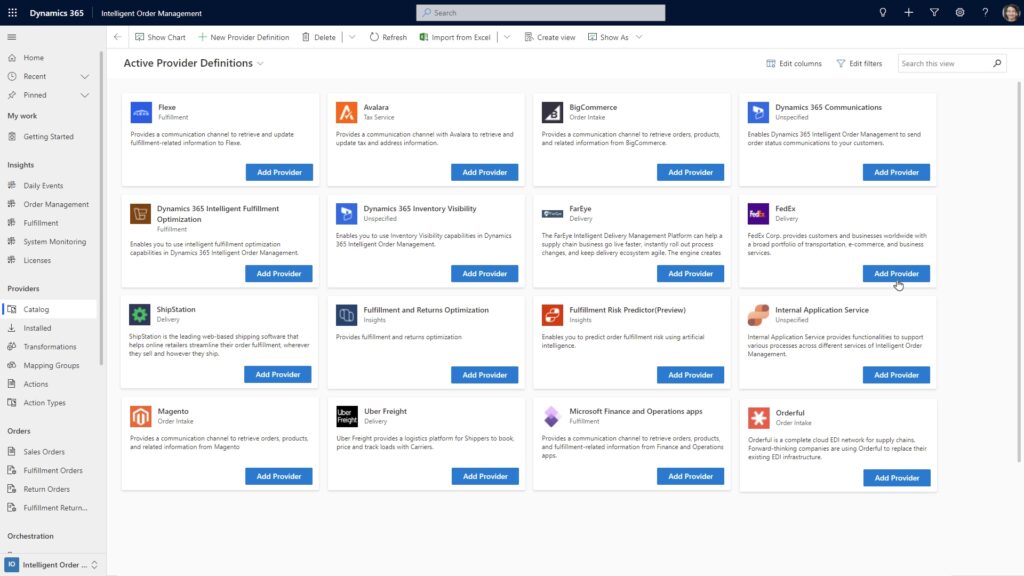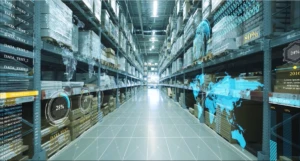
Delivering a seamless commerce experience: Unlocking omnichannel retailing with intelligent order management
The momentum of e-commerce continues. In fact, McKinsey & Company has stated that e-commerce shopping has 30 percent higher penetration than pre-COVID-19 pandemic, and that this pandemic has also accelerated e-commerce growth by five years.1 The COVID-19 pandemic certainly explains part of the growth in the demand, but it is not the whole story. Other factors such as increased mobile commerce, accelerated business-to-business (B2B) and direct-to-consumer (DTC) e-commerce adoption, and new technological advances have created both opportunities and challenges for companies that embrace omnichannel retailing.
Retailers must either build new or infuse present strategies, systems, and processes with a composable approach to obtain omnichannel commerce experience. Let’s look at how Microsoft Dynamics 365 modular and composable cloud-based solutions help organizations provide their customers with unified commerce experiences.
Agility improves operational execution
Retailers are investing in integrating experiences and agile solutions for a good reason. McKinsey & Company states that the new bar for omnichannel excellence is 10 or more channels over three engagement modes (in-person, remote, and self-service), delivered 24/7.2 Omnichannel fulfillment retail tactics, such as buy online pickup in store (BOPIS), buy online pickup at curbside (BOPAC), reserve online pickup in store (ROPIS), buy online return in store (BORIS), or locker, ship from store, ship to store, endless aisle, two-day delivery, and more, are adding more complexity and challenges for retailers to deliver on their order promise.
Hence, in these environments, unifying data across internal and external networks to include physical and digital touchpoints requires agile and resilient solutions for faster responses to market changes and disruptions. At the pandemic’s beginning, many retailers, manufacturers, distributors, and consumer packaged goods (CPG) companies accelerated their digital transformation journey to adapt to changing customers’ needs quickly.
“With Dynamics 365, we can make decisions much more quickly and respond in near real-time to consumer demand. What used to take two days now happens almost immediately.”
—Russell Anderson, Senior Director, Retail Operations
Columbia Sportswear
Watch the video in our customer story: “Columbia Sportwear gains business flexibility and a sales boost with Microsoft Azure and Dynamics 365.”
A modern microservices-based order management system (OMS) helps organizations incrementally replace modular components of their existing infrastructure to gradually advance wherever they are in their supply chain and commerce digital transformation journey. It also allows organizations to avoid costly and time-consuming rip-and-replace projects by seamlessly integrating with existing enterprise resource planning (ERP) investments, unifying data across disparate systems, and unlocking siloed inventory and operational data.
Extensibility scales end-to-end visibility and fulfillment
As order intake, cross-channel inventories, and third-party logistics providers (3PLs) intersect at order management, end-to-end visibility becomes an imperative. More than 80 percent of shoppers said it is important for retailers to provide the estimated date/time of arrival for products on their website, and 78 percent said providing in-store availability was important to them.3

Dynamics 365 Intelligent Order Management helps organizations achieve end-to-end order visibility through its fulfillment optimization engine that uses real-time inventory visibility and AI. More than half, 66 percent, of retailers surveyed said inventory accuracy—a core capability for omnichannel fulfillment—was very or somewhat challenging when setting up their omnichannel program.4
Dynamics 365 Intelligent Order Management also extends its intelligent fulfillment optimization capabilities with out-of-the-box, pre-built connectors to an ecosystem of specialized partners for e-commerce, delivery, transportation, warehouse management, tax compliance, price calculation, and other logistics services.

For example, consider our pre-built connector to our partner Flexe, the programmatic logistics leader. The Dynamics 365 Intelligent Order Management Flexe connector expands the fulfillment capabilities, processes purchase orders from Flexe, and adds flexible warehouse management service. It also provides Dynamics 365 Intelligent Order Management users the option to rapidly expand network capacity, or allocate inventory closer to the customers and avoid the long-term contracts or fixed costs of traditional warehouse solutions.
With the ability to extend business capabilities through pre-built partner connectors, organizations can improve omnichannel strategies in step with their retail supply chain digital transformation processes. This allows organizations to incrementally scale their offering with modular, composable, and cloud-based business applications, bringing more agility and resilience into their omnichannel distribution network.
Composability enables omnichannel success
According to Gartner®, by 2024, 60 percent of intelligent software as a service (SaaS) will be composed from packaged business capabilities providing data, analytical insight, and operational application services.5 And by 2024, the design mantra for new SaaS and custom applications will be “composable API-first or API-only,” rendering traditional SaaS and custom applications “legacy.”6
Dynamics 365 unlocks composability and helps organizations achieve a unified commerce experience. It seamlessly integrates with existing ERP and customer relationship management (CRM) systems so that retailers can respond faster to customers’ needs by extending their business capabilities through out-of-the-box connectors to an ecosystem of specialized logistics services. This intelligent and modern platform provides a single view of orders across channels. Our fulfillment optimization engine uses a rules-based system, real-time inventory visibility, and AI to determine the most cost-efficient order fulfillment.

According to Forrester, 68 percent of global retail and wholesale purchase influencers plan to invest in AI solutions.7 Retail supply chain and commerce professionals can take advantage of the machine learning, AI, and low-code/no code features of Dynamics 365 Intelligent Order Management. They can easily reconfigure order flows and proactively overcome bottlenecks by modeling the order journey through an easy-to-use orchestration designer built in the fulfillment optimization engine.
Create more agile and resilient supply chains
Dynamics 365 supply chain solutions helps build agile and resilient supply chains through easy-to-use, modular, and composable cloud-based business applications. Dynamics 365 Intelligent Order Management works seamlessly with existing ERP and CRM systems so that retailers can get to market faster, even when dealing with the complexities and challenges of omnichannel retail and fulfillment. They can also respond faster to customer needs by extending their fulfillment services through a composable and API-first connectivity architecture with out-of-the-box connectors to market-leading 3PL software solutions. With easy-to-deploy omnichannel fulfillment solution, retailers, manufacturers, distributors, and CPG companies can accelerate their supply chain digital transformation and turn order fulfillment into a competitive advantage.
Sources:
1. McKinsey & Company. Beyond the distribution center. June 2022.
2. McKinsey & Company, 2022. The new B2B growth equation.
4. Forrester. Building The Business Case For Omnichannel Commerce, August 2021.
6. Gartner. Top Strategic Technology Trends for 2022: Composable Applications. October 2021.*
(*) GARTNER is a registered trademark and service mark of the Gartner Inc., in the U.S. and internationally and is used herein with permission.




